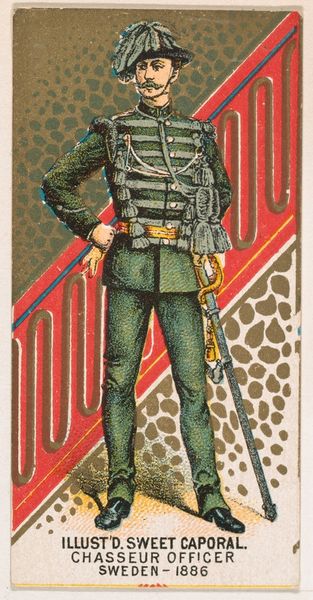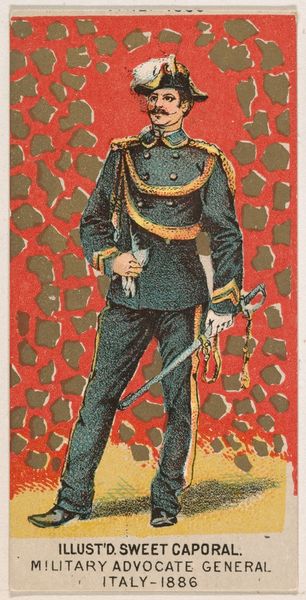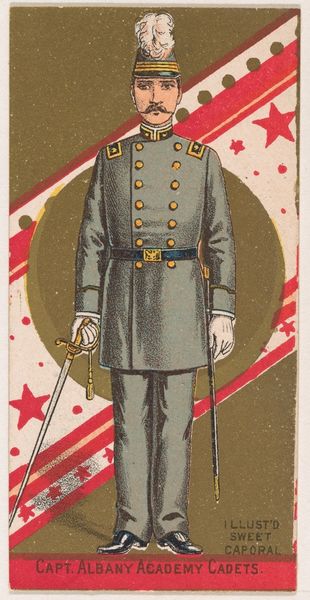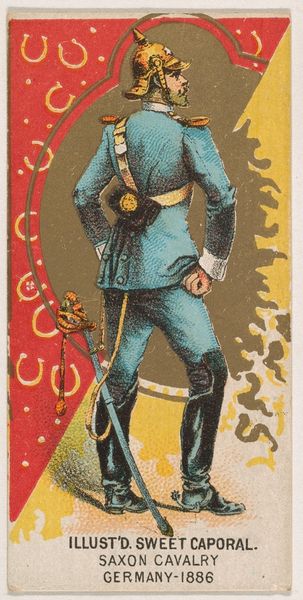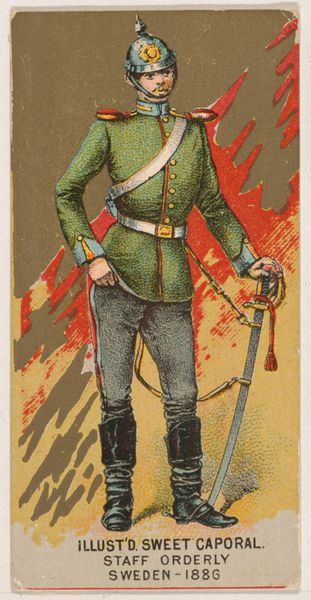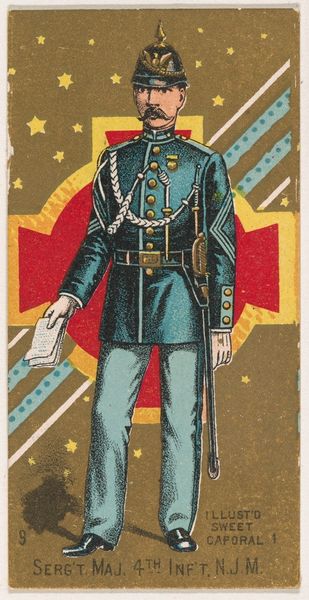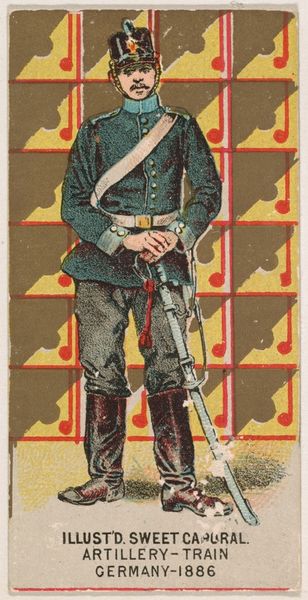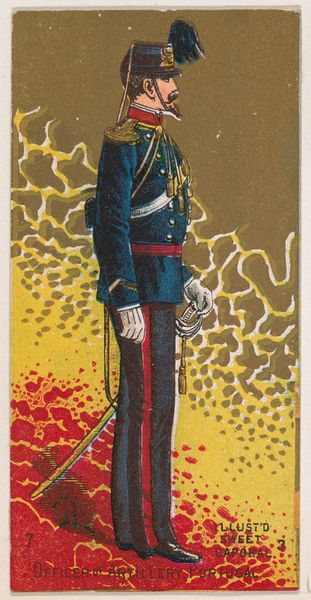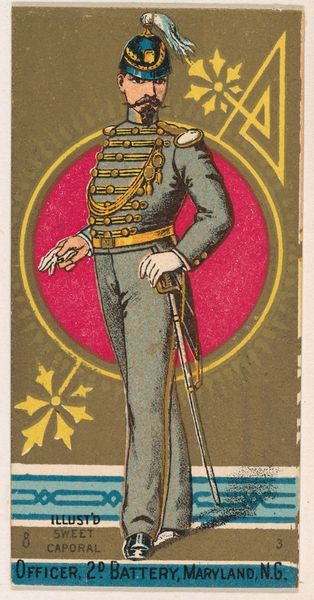
Field Artillery, Germany, 1886, from the Military Series (N224) issued by Kinney Tobacco Company to promote Sweet Caporal Cigarettes 1888
0:00
0:00
drawing, coloured-pencil, print
#
portrait
#
drawing
#
coloured-pencil
# print
#
caricature
#
figuration
#
coloured pencil
#
naive art
#
genre-painting
#
academic-art
#
realism
Dimensions: Sheet: 2 3/4 × 1 1/2 in. (7 × 3.8 cm)
Copyright: Public Domain
Curator: The direct gaze is arresting, isn’t it? This colored print titled "Field Artillery, Germany, 1886" comes to us from Kinney Tobacco Company in 1888. It was, believe it or not, a promotional item for Sweet Caporal Cigarettes. Editor: Immediately, I'm struck by the rigidity of the figure. He looks almost like a toy soldier—a symbol, I imagine, of empire and militaristic precision marketed right alongside tobacco. Curator: Indeed, and the portrait’s strength lies in its symmetrical composition and careful color choices. Notice the placement of the red trim, juxtaposed against the soft blue of the uniform. The way those colors echo the backdrop adds another layer to the formal structure. Editor: The backdrop is fascinating! The patterns create an almost suffocating effect, which subtly enhances that soldier’s confined position, socially and politically. Considering its origins as an advertisement, it prompts questions about how tobacco companies have historically profited by linking their products to hypermasculine displays of power and violence. Curator: I concede the image’s background lends itself to multiple interpretations, but the precision evident in the subject’s bearing strikes me first. And it seems important to not neglect the material itself: these now aged colors retain surprising vibrancy, all printed on a humble card! Editor: What you call precision, I view as propaganda in the subtlest form. Advertising such imagery romanticizes war and the patriarchal structures that facilitate it, conditioning us to view militarism favorably, one cigarette card at a time. The scale is insidious—a seemingly innocuous piece promoting the normalization of state-sponsored violence. Curator: But the color scheme is interesting, isn't it? And, given the format, it anticipates a more commercial aesthetic through design. Its naive qualities offer an aesthetic lens on militarism, rather than a call to arms. Editor: Perhaps. Either way, the image reveals the tangled relationships between consumer culture, militarism, and national identity. It reminds us that even the smallest images carry powerful ideological messages. Curator: Well said. It leaves you to consider all those associations of colour, craft and commentary, right there, presented in miniature.
Comments
No comments
Be the first to comment and join the conversation on the ultimate creative platform.
